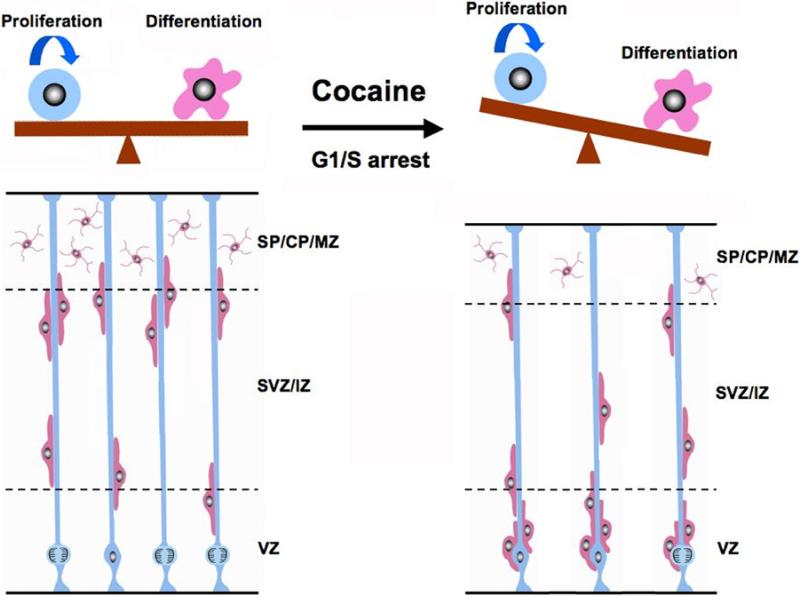Fig. 6.
Schematic illustrating cocaine's adverse effects on neocortical formation. During neocortical neurogenesis, neural progenitor cells (blue) in the ventricular zone (VZ) have two main fates: continuing proliferation, or exit from the cell cycle and neuronal differentiation (pink). In normal neocortical development (left side), proliferation and differentiation of VZ progenitor cells are well balanced. Cocaine exposure (right side) causes G1/S phase transition arrest, consequently shifting the balance towards differentiation. This premature differentiation not only causes an increase in the number of neurons in the VZ, but also a shortage of radial glial scaffolding which leads to backlog of neurons waiting to travel to their specific cortical layers along radial glia. VZ, ventricular zone; SVZ/IZ, subventricular zone/intermediate zone; SP/CP/MZ, subplate/cortical plate/marginal zone.

